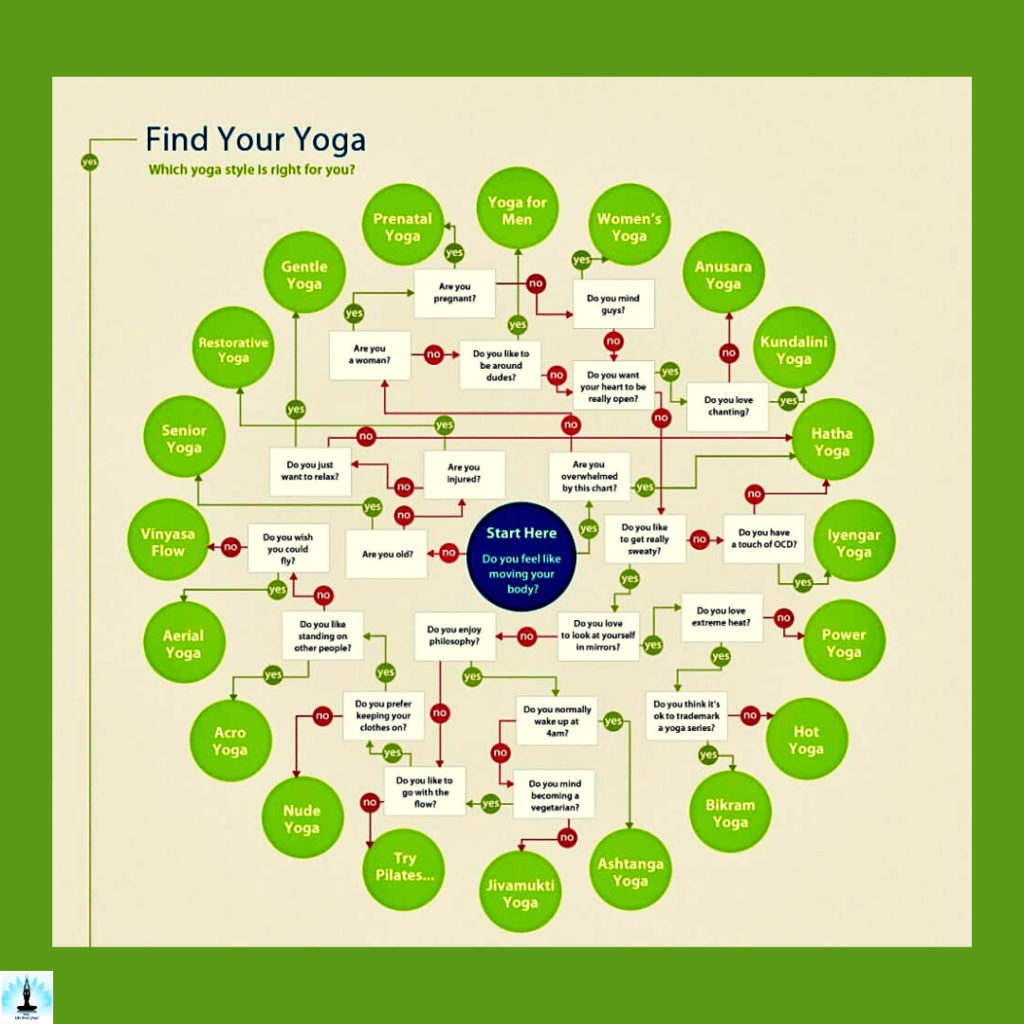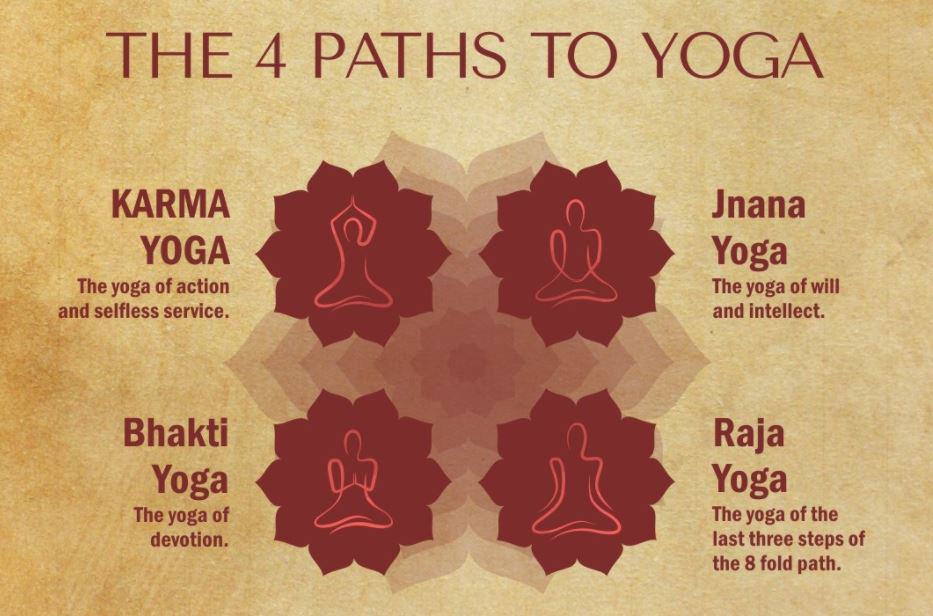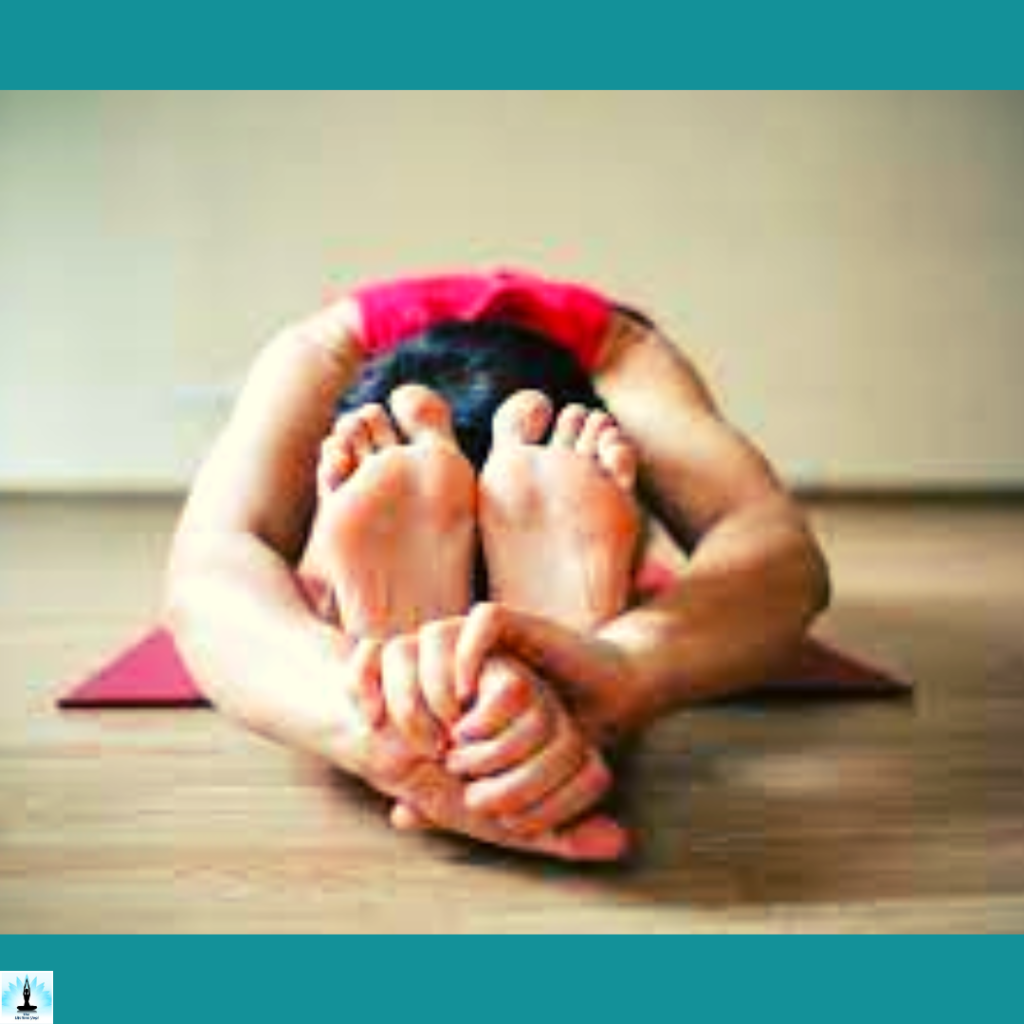What Are the Different Forms of Yoga? What Are the Differences?
Yoga, a practice that originated in ancient India, has evolved into a diverse tapestry of forms, each offering a unique approach to physical, mental, and spiritual well-being. In this blog, we will delve into various forms of yoga, exploring the differences that make each style distinct and suited to different individuals’ needs.

Table of Contents
Top 25 Different Style of Yoga You Can Practice This Year | What Are Some Types of Yoga and Their Characteristics?
Yoga is a diverse and ancient practice that encompasses a variety of forms, each with its own emphasis and techniques. Here are some of the main forms of yoga and their key differences:
Hatha Yoga:
- Focuses on physical postures (asanas) and breathing techniques (pranayama).
- Aims to balance the mind and body through physical practice.
Vinyasa Yoga:
- Involves flowing sequences of poses coordinated with breath.
- Emphasizes the connection between breath and movement.
Ashtanga Yoga:
- Follows a specific sequence of postures and is more physically demanding.
- Involves synchronized breath and movement.
Iyengar Yoga:
- Concentrates on alignment and precision in each posture.
- Uses props like belts and blocks to help practitioners achieve proper alignment.
Bikram Yoga (Hot Yoga):
- Involves a set sequence of 26 poses practiced in a heated room.
- Intended to enhance flexibility and detoxification.
Kundalini Yoga:
- Focuses on awakening the dormant energy at the base of the spine (kundalini).
- Includes dynamic movements, breathing exercises, and chanting.
Jivamukti Yoga:
- Integrates physical postures with ethical and spiritual principles.
- Emphasizes a holistic approach to yoga practice.
Yin Yoga:
- Involves holding passive poses for an extended period, targeting connective tissues.
- Aims to improve flexibility and promote relaxation.
Restorative Yoga:
- Utilizes props to support the body in various passive postures.
- Focuses on relaxation and rejuvenation.
Anusara Yoga:
- Emphasizes alignment principles and heart-centered awareness.
- Encourages a joyful and open-hearted approach to practice.
Power Yoga:
- Derived from Ashtanga Yoga but with more flexibility in the sequence.
- Focuses on building strength, flexibility, and endurance.
Sivananda Yoga:
- Follows a set sequence of 12 basic poses.
- Incorporates chanting, breathing exercises, and relaxation.
AcroYoga:
- Blends yoga, acrobatics, and Thai massage.
- Involves partner and group dynamics, promoting trust and communication.
Aerial Yoga:
- Utilizes fabric hammocks suspended from the ceiling.
- Allows for unique, gravity-defying poses to enhance flexibility and strength.
Integral Yoga:
- Founded by Swami Satchidananda, it integrates various aspects of yoga into a comprehensive practice.
- Emphasizes balance and harmony in physical, mental, and spiritual aspects.
Svaroopa Yoga:
- Concentrates on releasing tension in the spine.
- Uses props to support and facilitate deep openings in the body.
Laughter Yoga:
- Combines yoga breathing with intentional laughter.
- Aims to promote joy, reduce stress, and improve overall well-being.
Prenatal Yoga:
- Tailored for pregnant women to support physical and emotional well-being.
- Emphasizes poses and practices safe for each stage of pregnancy.
Chair Yoga:
- Adapted for individuals with limited mobility or physical challenges.
- Poses are modified to be done while sitting on a chair.
Jungle Yoga:
- Conducted in natural settings, often in forests or natural environments.
- Aims to connect practitioners with nature and enhance mindfulness.
Dharma Yoga:
- Founded by Sri Dharma Mittra, this style incorporates classical yoga practices.
- Emphasizes ethical and spiritual teachings along with physical postures.
Kripalu Yoga:
- Integrates physical postures, breathing, and meditation.
- Encourages self-discovery and the acceptance of one’s own limits.
Tantra Yoga:
- Explores the connection between spiritual and physical aspects of life.
- Incorporates rituals, meditation, and breathwork.
Dhyana Yoga (Meditative Yoga):
- Primarily focuses on meditation.
- Includes seated postures and breath control to facilitate concentration.
Pranayama Yoga:
- Concentrates on breath control and regulation.
- Practices include various breathing techniques to enhance vitality and mental clarity.
These are just a few examples, and there are many more styles and variations of yoga. The choice of which form to practice depends on individual preferences, goals, and physical abilities. It’s also common for practitioners to explore and blend different styles to create a personalized practice that suits their needs.
What are the 4 major types of yoga?

Yoga, an ancient practice originating in India, is often perceived as a physical discipline involving poses and stretches. However, its depth goes far beyond the physical realm. In the vast landscape of yoga, there are four primary paths, each offering a unique approach to self-discovery, spiritual growth, and a harmonious life. Let’s delve into the essence of these paths: Jnana Yoga, Bhakti Yoga, Karma Yoga, and Raja Yoga.
1. Jnana Yoga – The Path of Knowledge
Jnana Yoga is the path of wisdom and intellect, emphasizing the pursuit of knowledge and self-realization. Practitioners of Jnana Yoga seek to understand the true nature of reality by discerning between the temporary and the eternal. This path involves deep contemplation, self-inquiry, and the study of sacred texts. The key is to transcend the limitations of the mind and recognize the oneness that underlies all existence.
2. Bhakti Yoga – The Path of Devotion
Bhakti Yoga is the path of love and devotion, where practitioners cultivate a deep connection with a higher power. It involves surrendering one’s ego and desires to a divine force, fostering a profound sense of love and devotion. Through prayer, rituals, and chanting, Bhakti Yogis aim to dissolve the boundaries between themselves and the divine. This path teaches that true fulfillment comes from selfless love and devotion to something greater than oneself.
3. Karma Yoga – The Path of Selfless Action
Karma Yoga is the path of selfless service and action. It teaches that true spiritual growth comes from performing one’s duties without attachment to the results. By acting selflessly and with a sense of duty, practitioners aim to purify their hearts and minds. This path emphasizes the importance of contributing positively to the world, cultivating a spirit of service, and detaching oneself from the fruits of their actions.
4. Raja Yoga – The Path of Royal or Ashtanga Yoga
Raja Yoga, often referred to as the “royal path” or “Ashtanga Yoga,” encompasses the eight limbs outlined by the sage Patanjali in the Yoga Sutras. This path includes ethical principles (yamas and niyamas), physical postures (asanas), breath control (pranayama), withdrawal of the senses (pratyahara), concentration (dharana), meditation (dhyana), and ultimately, union with the divine (samadhi). Raja Yoga integrates various yogic practices to purify the body, mind, and soul, leading to self-realization and inner peace.
What type of intensity is yoga?
Yoga encompasses a wide spectrum of intensities, making it a versatile practice accessible to people of all fitness levels. From gentle, restorative forms focused on relaxation and flexibility to dynamic, high-intensity styles emphasizing strength and endurance, yoga offers a range of options.

The intensity of a yoga session can be tailored to individual preferences and goals. Whether one seeks a serene and meditative experience or a more vigorous physical workout, the diverse styles of yoga allow practitioners to find a suitable intensity that aligns with their needs.
The holistic nature of yoga encourages not only physical well-being but also mental and spiritual balance, contributing to its popularity and adaptability across various lifestyles.
Which Style of Yoga is the Hardest?
The perception of difficulty in yoga styles can vary among individuals based on their preferences, fitness levels, and personal experiences. However, some practitioners may find styles that involve physically demanding postures and sequences, such as Ashtanga or Power Yoga, to be more challenging.

These styles often incorporate dynamic movements, strength-building poses, and a faster pace, requiring endurance and flexibility. It’s essential to recognize that the perceived difficulty of a yoga style is subjective, and what might be challenging for one person could be invigorating and enjoyable for another.
Ultimately, the “hardest” style depends on an individual’s fitness goals, body type, and preferences.
How is yoga different from meditation?
Yoga and meditation are related practices but differ in their focus and approach. Yoga encompasses a broader spectrum, combining physical postures (asanas), breath control (pranayama), and meditation.
It is a holistic system that addresses physical, mental, and spiritual well-being, emphasizing the union of mind, body, and spirit. On the other hand, meditation is a specific mental discipline aimed at cultivating mindfulness, concentration, and self-awareness.
While yoga often incorporates meditation as one of its components, meditation itself involves practices like mindfulness meditation, loving-kindness meditation, or transcendental meditation. In essence, yoga is a comprehensive system that includes meditation as one of its tools for achieving balance and harmony.
Are there any risks to yoga?
Yoga is generally considered safe for most people, it’s essential to be aware of potential risks and take precautions:
Physical Strain
Certain poses or practices may lead to physical strain, especially if not done correctly. It’s crucial to listen to your body, avoid overexertion, and practice under the guidance of a qualified instructor.
Existing Health Conditions
People with certain health conditions, such as cardiovascular issues, musculoskeletal problems, or specific injuries, should consult their healthcare provider before starting a yoga practice. Some poses may need to be modified or avoided.
Pregnancy
Pregnant women should practice prenatal yoga and avoid poses that involve lying on the stomach or putting pressure on the abdomen. Consulting with a healthcare provider is crucial for a tailored approach.
Overemphasis on Flexibility
Pushing too hard for flexibility without proper warm-up or awareness can lead to injuries. Balance in strength and flexibility is essential.
Mental Health Considerations
While yoga can be beneficial for mental health, individuals with certain mental health conditions, such as severe anxiety or depression, should practice under the guidance of a mental health professional.
Inexperienced Instructors: Practicing with inexperienced instructors may increase the risk of injuries. Choose certified and knowledgeable instructors for a safe practice.
Here individual experiences may vary, and it’s advisable to start slowly, communicate with your instructor, and modify practices based on your unique needs and abilities. Always consult with your healthcare provider if you have any concerns about the suitability of yoga for your specific situation.
FAQs On What Are the Different Forms of Yoga? What Are the Differences?
1. What are the different forms of yoga?
Yoga is a diverse practice with various forms catering to different needs and preferences. Some popular types include Hatha, Vinyasa, Ashtanga, Bikram, Kundalini, and Iyengar. Each form emphasizes specific aspects like physical postures, breath control, meditation, or a combination of these elements.
2. How do the different forms of yoga differ?
The differences lie in the techniques, intensity, and focus of each yoga form. Hatha is gentle and ideal for beginners, focusing on basic postures and breathing. Vinyasa involves flowing movements synced with breath, providing a more dynamic experience. Ashtanga is a rigorous and structured practice, while Bikram involves a set sequence in a heated room. Kundalini emphasizes breath work and meditation, and Iyengar uses props to perfect alignment.
3. Which form is suitable for beginners?
Hatha and Vinyasa are often recommended for beginners due to their accessible pace and foundational poses. These forms provide a solid introduction to yoga principles and allow individuals to gradually build strength and flexibility.
4. What is the role of meditation in yoga?
Meditation is a crucial aspect of many yoga forms, promoting mental clarity, mindfulness, and stress reduction. It cultivates a deeper connection between the mind and body, enhancing overall well-being.
5. Can I combine different yoga forms?
Yes, many practitioners combine elements from various forms to create a personalized practice that suits their needs. This is known as a hybrid or eclectic approach, allowing individuals to enjoy the benefits of different yoga styles.
6. How do I choose the right yoga form for me?
Consider your fitness level, preferences, and goals. If you seek a slower-paced practice with a focus on foundational poses, Hatha might be suitable. Those looking for a more dynamic and intense workout may prefer Vinyasa or Ashtanga. Trying different classes and styles can help you discover what resonates with you.
7. Are there spiritual aspects in all forms of yoga?
While spiritual elements are present in many forms, the degree varies. Some, like Kundalini and Bhakti, have a strong spiritual emphasis, incorporating chanting and meditation. Others, such as Hatha or Iyengar, may focus more on the physical aspects but still offer opportunities for spiritual growth if desired.
Conclusion
The world of yoga is rich and diverse, offering something for everyone, regardless of age, fitness level, or spiritual inclination. Exploring these different forms allows individuals to find a practice that aligns with their goals, preferences, and unique journey toward holistic well-being. Whether seeking physical fitness, stress relief, or spiritual awakening, the vast array of yoga styles ensures there’s a path for every practitioner.
References
- https://www.ncbi.nlm.nih.gov/pmc/articles/PMC3193654/
- https://www.ncbi.nlm.nih.gov/pmc/articles/PMC7081324/
- https://pubmed.ncbi.nlm.nih.gov/27062966/
- https://www.ncbi.nlm.nih.gov/pmc/articles/PMC7503485/
- https://pubmed.ncbi.nlm.nih.gov/37042664/
- https://www.ncbi.nlm.nih.gov/pmc/articles/PMC6993095/
- https://pubmed.ncbi.nlm.nih.gov/32147083/
